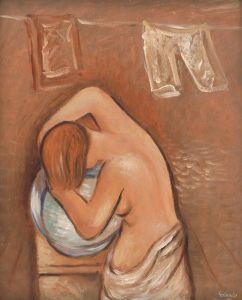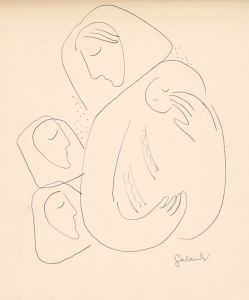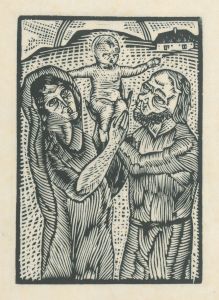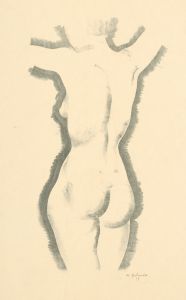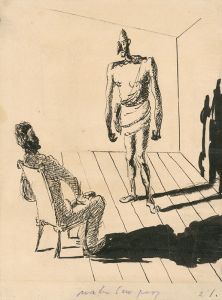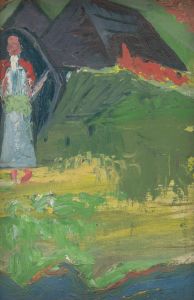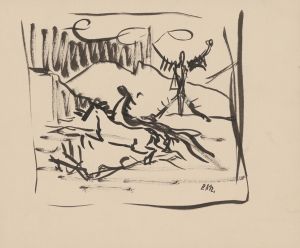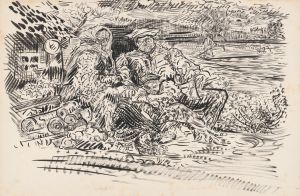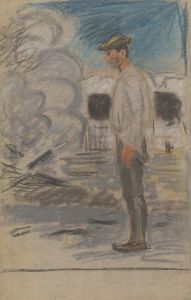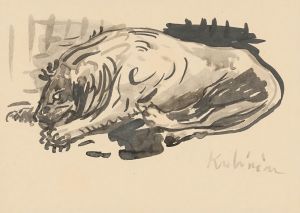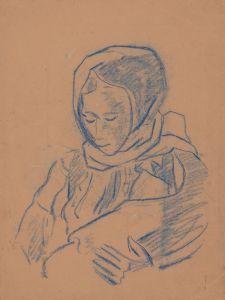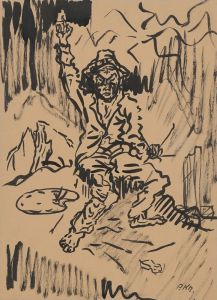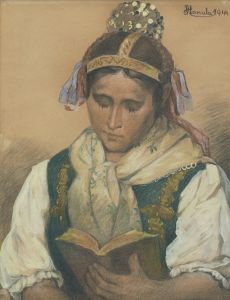
Štúdia lovca
A hand-painted replica of Arnold Peter Weisz-Kubínčan’s masterpiece Štúdia lovca, meticulously crafted by professional artists to capture the true essence of the original. Each piece is created with museum-quality canvas and rare mineral pigments, carefully painted by experienced artists with delicate brushstrokes and rich, layered colors to perfectly recreate the texture of the original artwork. Unlike machine-printed reproductions, this hand-painted version brings the painting to life, infused with the artist’s emotions and skill in every stroke. Whether for personal collection or home decoration, it instantly elevates the artistic atmosphere of any space.
Arnold Peter Weisz-Kubínčan was a Slovak painter known for his contributions to modern art in the early 20th century. His work, "Štúdia lovca," is one of the pieces that exemplifies his unique style and artistic vision. Weisz-Kubínčan was born in 1898 in Hungary, which later became part of Slovakia after the Treaty of Trianon in 1920. He studied art in Budapest and later in Vienna, where he was influenced by the avant-garde movements of the time, including Expressionism and Cubism.
"Štúdia lovca," translated as "Study of a Hunter," reflects Weisz-Kubínčan's interest in exploring human figures and their interactions with the environment. The painting is characterized by its bold use of color and dynamic composition, which are hallmarks of Weisz-Kubínčan's style. His work often incorporated elements of Slovak folklore and mythology, which can be seen in the thematic choices and symbolic elements present in his paintings.
Weisz-Kubínčan's career was significantly impacted by the political and social upheavals of his time. As a Jewish artist in Central Europe during the rise of Nazism, he faced persecution and was forced to flee his homeland. Despite these challenges, he continued to create art that was deeply personal and reflective of his experiences. His works from this period often convey a sense of displacement and longing, themes that resonate in "Štúdia lovca."
The painting itself is notable for its expressive brushwork and the way it captures the tension and energy of the hunter's pursuit. Weisz-Kubínčan's use of color is particularly striking, with vibrant hues that bring the scene to life and draw the viewer into the narrative. The composition is carefully balanced, with the figure of the hunter positioned in a way that suggests movement and urgency.
Weisz-Kubínčan's contribution to Slovak art is significant, as he was one of the few artists of his time to successfully blend traditional themes with modernist techniques. His work has been exhibited in various galleries and museums, both in Slovakia and internationally, and continues to be studied for its innovative approach and emotional depth.
Tragically, Weisz-Kubínčan's life was cut short during World War II. He was deported to a concentration camp, where he died in 1945. Despite his untimely death, his legacy lives on through his art, which remains a testament to his talent and resilience. "Štúdia lovca" is a powerful example of his ability to capture the complexities of the human experience through his unique artistic lens.
Today, Weisz-Kubínčan is remembered as a pioneering figure in Slovak modern art. His works are celebrated for their technical skill and emotional impact, and they continue to inspire new generations of artists and art enthusiasts. "Štúdia lovca" stands as a poignant reminder of his enduring influence and the rich cultural heritage of Slovakia.





